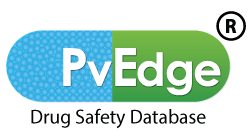Literature surveillance is a vital part of pharmacovigilance. Medical journals, case reports, and scientific publications often contain the first signs of adverse drug reactions or safety issues. That’s why global regulatory bodies like the EMA and FDA require Marketing Authorization Holders (MAHs) to monitor the scientific literature regularly and report relevant cases.
For a long time, this task was handled manually. Teams combed through journals, databases, and websites, hunting for possible mentions of their products. But with the explosion of digital content and the pressure to respond faster, that old approach just doesn’t work anymore.
The Manual Burden Is Real
Manual literature surveillance is repetitive, time-consuming, and highly error-prone. Reviewers have to search multiple sources, identify relevant articles, extract key information, assess whether a case meets ICSR criteria, and prepare it for submission—all while keeping up with publication cycles that never slow down.
When safety teams are working with dozens or even hundreds of references weekly, things get missed. Relevant articles may be overlooked. Case details might be misinterpreted or logged incorrectly. And the clock never stops ticking.
What’s Changed?
The volume of literature is growing, but that’s not the only challenge. The expectations from regulators are also shifting.
For example, the EMA mandates that MAHs monitor at least one recognized medical literature database (such as Embase or MEDLINE) and report ICSRs from literature sources in the same way they’d handle spontaneous reports. That includes:
Validity checks
Timely submissions
Audit-ready documentation
With global oversight getting tighter, relying on human reviewers alone just isn’t scalable anymore.
Toward a Smarter System
The solution isn’t to add more people. It’s to work smarter. Automation, natural language processing (NLP), and AI are now playing a key role in helping pharmacovigilance teams monitor literature more efficiently.
These technologies can scan hundreds of articles for keywords, extract relevant case data, and flag potential ICSRs for review—all in a fraction of the time a human would need. They don’t get tired, they don’t miss obvious matches, and they can handle far more volume than any manual team.
What It Means for PV Teams
This shift frees safety professionals from the repetitive grind of article review and allows them to focus on analysis, validation, and regulatory submission. It also makes literature surveillance more consistent and traceable, improving overall compliance and case quality.
In today’s landscape, literature surveillance isn’t optional—and doing it manually just isn’t practical.



